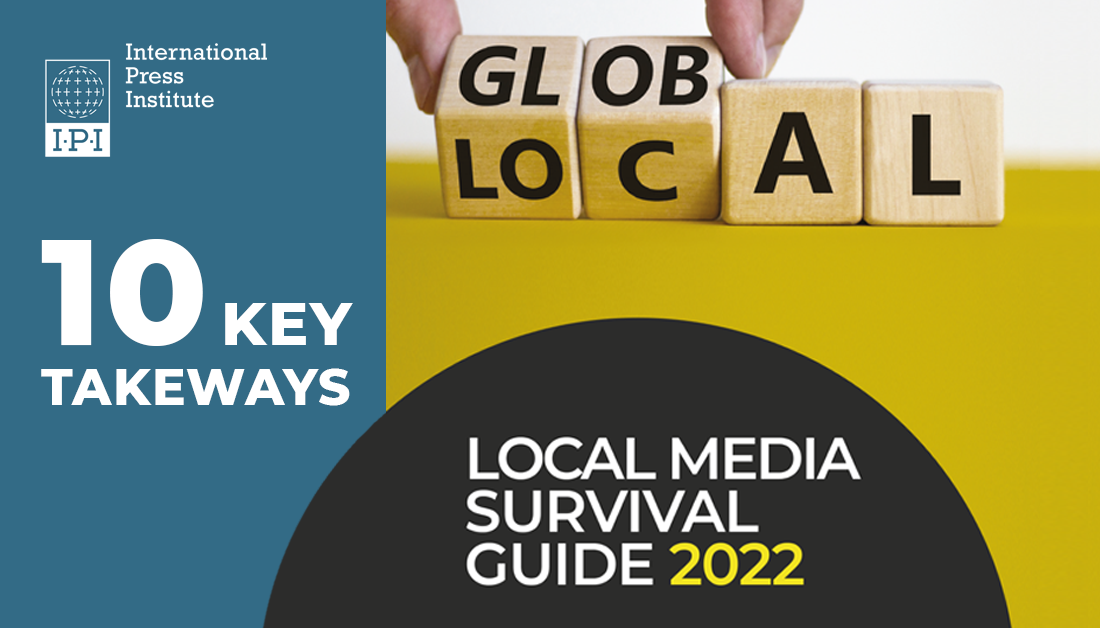This report followed on from an earlier look by the IPI global network at local media that contrasted local media in the developed West (particularly the U.S., the UK, and France) and in emerging economies, particularly in South Africa and the Asia/Pacific region. This deeper look at local media in Latin America, Africa, Asia, and Eastern Europe has both led to new insights and tested those we drew from our earlier research. So what have we found that is particularly relevant to local news media in the regions under review?
1.
The disruption of local news media – the most disrupted sector of the media – makes it the sector most open to experimentation and innovation and with the greatest potential to form the bedrock of a new, stronger media ecosystem. There is a great need for transition support infrastructure. In many countries, local media are also increasingly targeted by authoritarian populists.
2.
Too many local communities have traditionally been information-poor with weak or no local media (or, often worse, media controlled by the state and/or local oligarchic elites). Information scarcity has walked hand-in-hand with economic disadvantage: affluent and urban, educated audiences have been traditionally better served, reinforcing social inequality.
3.
The intensity of this need – of this market gap – is mobilizing journalists and media-builders to commit to meeting the needs of their communities with a mission for journalism by engaging them in new or transitional voices that speak for – and of – them. With the opportunities presented by the digital space, journalists are rethinking the products that will meet audience needs.
4.
Local news media are shaped for the local context to both reflect and create their communities with a clear sense of their mission, editorial vision, and audience (or potential audience). They have or gain an understanding of the intricacies of local culture and diversity by embedding themselves in the community, by looking like the community, and by being their community’s champion in telling their stories to one another and the world.
5.
Wide-ranging innovation and experimentation is having a strong positive impact on local media outlets and the transition infrastructure (grants, advice, networks) available to support them, but this is unevenly distributed and, at times, dependent on reallocation of resources from other philanthropic projects. Innovation in local news is restrained by the limits of scale, which demands new thinking around sharing, replication, and adaptation, including through national media developing a local mindset with correspondents and localized distribution.
6.
Digital natives are grasping the opportunity, not tied by the dead weight of the past (including restraints of legacy organizational culture). They also tend to be less subject to state capture (although as illiberal and authoritarian states expand their repression model, digital native media also become targets). Media that want to transition have to think like a digital native. Remember, too: the rising generation of audiences consists of digital natives.
7.
Engagement with local communities needs to be embedded across the process chain as a new way of thinking about journalism, from design to editorial decision-making to product. Sustainability demands a continued demonstration of local media outlets’ value to their community, particularly to communities that have historically been excluded from mass media offerings. It requires writing for, rather than about, communities, and building new audiences through a lens of inclusion.
8.
Local media need to leverage their inherent connectivity to generate trust and build an emotional attachment of “being on the same side” as their community. This is an essential shield against authoritarianism. Indeed, local news media are central in the battle against misinformation and disinformation. They play a key role in fact-checking, carrying out deep reporting, and debunking disinformation and misinformation. Local media understand that they are working in a polluted news environment and use trust and truth to compete with “fake news”.
9.
There is more room for experimentation with the local news product, driven by a reassessment of the job journalism does for a community. There is no right or wrong model – nor one single best product. Local news media are finding ways to reach their audience where they are. As local media transition online, opening access to new audiences, they can explore products that engage communities that may not have been served through traditional print. Having a local transition infrastructure where media can learn from one another is particularly important.
10.
Not all communities can sustain the media they need at the local level. There are real limits to reader revenues in low-income and disadvantaged communities (which can also be less attractive for advertisers). This means looking to other sources such as the region’s diaspora, to local businesses as donors, and to philanthropy. The donor community needs to think more about local media outside Europe and the U.S. and be prepared to commit long-term support for basic news operations.



